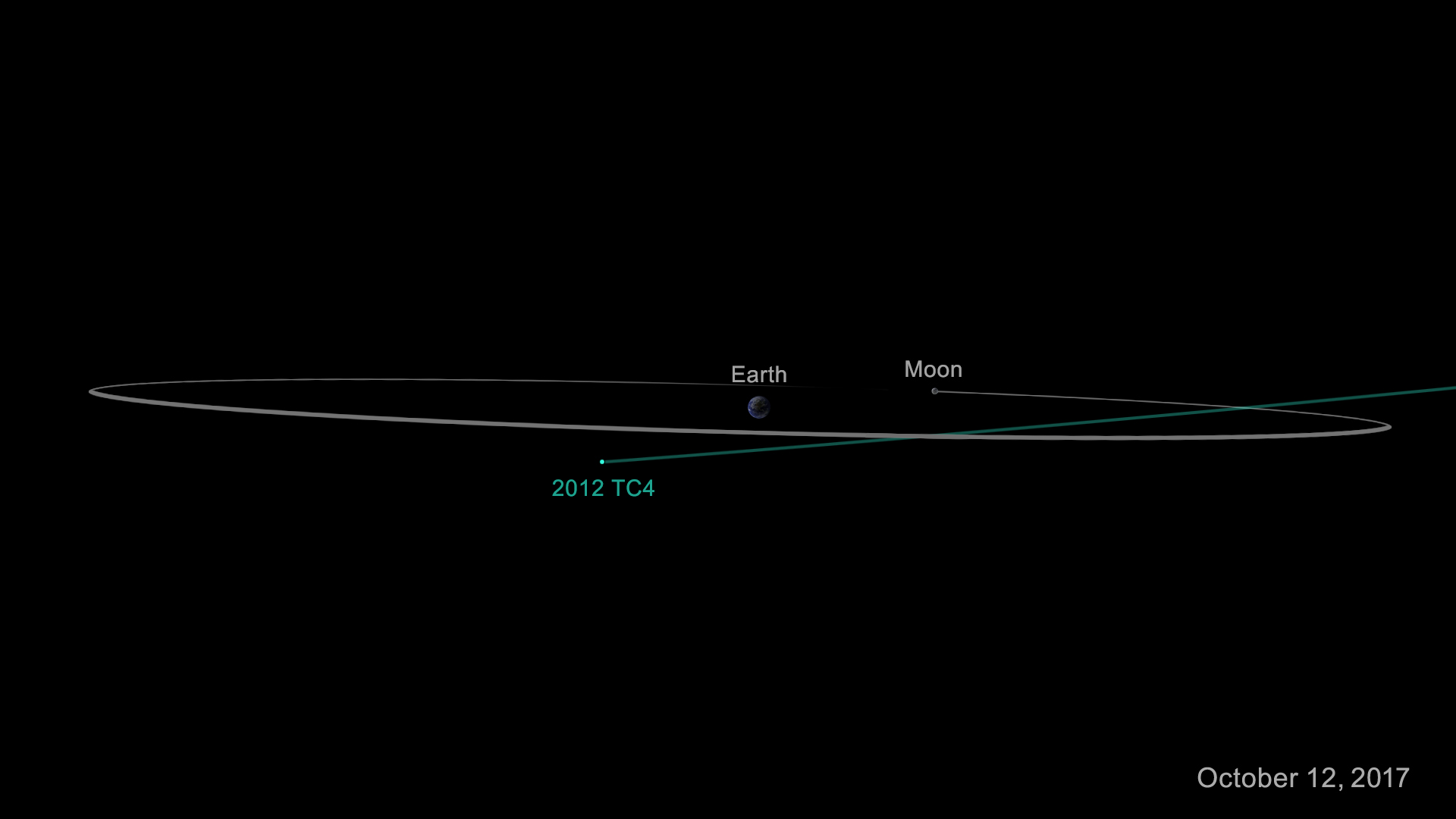On October 12th, 2017, around 05h 42min UT, a small piece of rock, which dimensions range from 10 to 30 m, will pass at approximately 51 200 km from Earth surface. Shining as a fast moving +12,8 magnitude point, it will be observable in most amateur instruments, providing they know where to observe!

Discovered 5 years ago, on October 5th, 2012, by PanSTARRS-1 (Panoramic Survey Telescope and Rapid Response System) program, the accurate orbit of 2012 TC4 was hard to determine, as there were a few data available just after its discoveryand the October 2017 close approach distance ranged from 6 000 to 430 000 km! Now its orbit has been determined with much more precision, and it’s sure there will be no collision this year with this small asteroid. It will rather come as close at 51 200 km from Earth surface, making it a target for astronomers. But 2012 TC4 is interested, because it often comes close to our planet, and tonight approach will be so close that it will considerably deflect the object trajectory, making difficult any forecasts on its future orbit, for the moment.

At brightest, 2012 TC4 should shine as a fast moving +12.8 magnitude point,rushing from Capricornus into Sagittarius constellations. On October 11th night, it will move on a West-Southern trajectory in the South-Eastern part of Capricornus, as a +14 magnitude object, 230 000 km away. It will then come closer and reach the constellation of Sagittarius. As the object is coming very close from, there is some parallax effects that makes the ephemeris of 2012 TC4 different depending on the location you observe from. If you wish to generate your own ephemeris table (very important to manage to catch the dim moving point into the starfield), you can use the NASA/JPL asteroid ephemeris generator.




 You saw something bright and fast? Like a huge shooting star? Report it: it may be a fireball.
You saw something bright and fast? Like a huge shooting star? Report it: it may be a fireball.  You counted meteors last night? Share your results with us!
You counted meteors last night? Share your results with us!  You took a photo of a meteor or fireball? You have a screenshot of your cam? Share it with us!
You took a photo of a meteor or fireball? You have a screenshot of your cam? Share it with us!  You caught a meteor or fireball on video? Share your video with us!
You caught a meteor or fireball on video? Share your video with us!
One comment